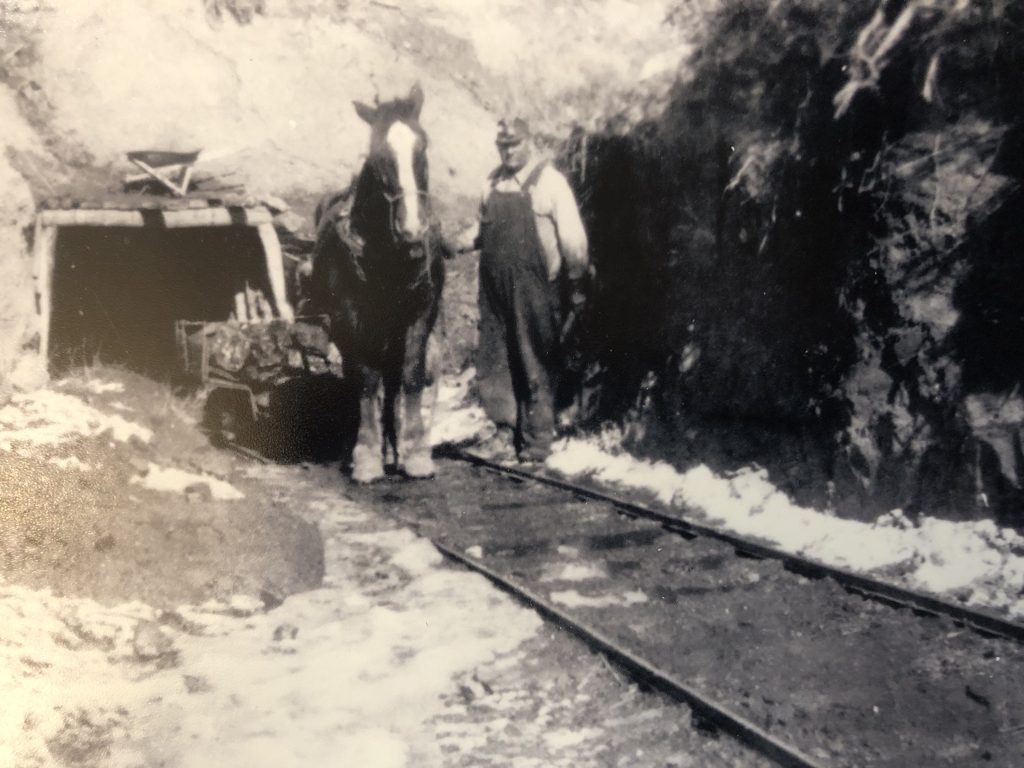

Coal and Culture Jan 25, 2024 James Neton jneton@craigdailypress.com
As homesteaders and ranchers arrived in the area in the late 19th and early 20th century, they quickly eyeballed the accessible and rich veins of coal as an opportunity for hard cash. Small independently owned “wagon mines” soon emerged. In exchange for this wealth, miners offered up their strength and willpower in a stubborn and reluctant struggle.
This labor toughened the muscles and minds of the miners. In turn, the attitude created by this type of work played an important role in shaping Moffat County’s edgy, and at times, stubborn and reluctant mentality.
Wagon mines dotted the southeast portion of Moffat County and Routt County. They varied in size, methods, complexity, production and longevity. After hours of research, I verified the existence of thirteen wagon mines in today’s Moffat County. However, a 1925 review of the coal industry in the Craig Empire stated that within a 25-30 mile radius of Craig, “no less than thirty of these so-called ‘wagon mines’ have been opened and developed.” (12/30/25).
The Walker and Knez coal mines share an intertwined history and reveal the nature of this early era of coal mining. Both mines were southeast of Craig along today’s Knez Divide Road (County Road 33). George Walker’s mine was situated one and a half miles south of the turn-off of Highway 394, while Joe Knez’s was one mile further south on the east side of the road.
George Walker was originally a rancher and also hauled freight from Rawlins. (The Pantagraph, 9/22/1893). A coal mine was a chance to earn cash income, and his first advertisement shows up in the Craig Courier In 1896, selling coal for $1.50 per ton.
Proximity to the growing town of Craig was an advantage. In February of 1901, Walker was still selling coal at the mine for $1.50 per ton and $2.50 delivered. Meanwhile, in the same edition of the Craig Courier, the George Ratcliff Coal Bank was selling coal for $1.50 per ton but $3.50 for delivery to town. Close proximity to Craig gave one George an advantage over the other George.
In July of 1904, Walker leased his mine to W.E. Smith and John Miller. The two men set to work refitting the mine with new “shoots and accommodations” to ramp up production and supply coal “promptly and in any quantity” (Routt County Courier, 8/25/1904). Over the next decade, Walker leased his mine to several different men, invariably taking back control when the lease ended or the lessees quit.
With the arrival of the railroad in 1913, large scale mining posed a threat to the independent wagon mines. Undaunted, Walker created what is most likely the area’s first “Buy Local” ad campaign urging consumers to support the local mines: “You are supporting home people who spend their money here and not having it taken away by foreign corporation and railroad …” Folks, Wal-Mart wasn’t the first one to do it.
Joe Knez, born in 1890 in Croatia, then part of the Austro-Hungarian empire, came to the United States in 1910. While working on a ranch in Montana, he met Marie and the two were married in 1914. A few months later, the couple arrived in Moffat County, and soon enough Knez leased the Walker Mine in 1916 (Moffat County Courier, 6/1).
Joe and Marie took up a homestead on their namesake Knez Divide. Even though Joe farmed the land, he was a miner at heart. He opened three separate mines in the vicinity of his homestead, but difficult conditions and even flooding of one mine forced him to shut down. Undeterred, Joe kept searching for the right location for a new mine.
In 1929, he accessed a thick vein of coal and opened his fourth mine. Through blasting with dynamite and the labor of the pick and shovel, he started tunneling into the hillsides and extracting his wealth for the next 23 years.
In 1952, the state’s official map of the Knez mine is a picture of the tenacity and willpower necessary to operate a wagon mine. Measuring roughly 700′ by 1000′ the mine was a labyrinth of tunnels, supports, air shafts, rail lines for easier removal, a weight scale and tipple. At times, Knez employed up to 15 men.
Through the decades, Knez ran his operation while the industry rapidly changed. In 1922, a 163-day, nationwide UMW strike led by John L. Lewis of the United Mine Workers swept through the larger mines of the area, leading to a major victory for unionized miners.
In the mid 1920s, state law mandated better ventilation, first aid equipment and a mine foreman, putting the squeeze on wagon mines. As coal mining became corporate-dominated, Joe Knez simply kept pulling coal out of his mine, long past the early unbridled era of wagon mines. He succumbed to cancer in 1954.
As coal fades as part of our local economy, it’s important to remember how men like George Walker and Joe Knez were willing to engage in hazardous and difficult work. Their legacy is woven into the fabric of this community’s personality. As we face an uncertain future, we would do well to hang on to their example.
James Neton teaches history at Moffat County High School. He can be reached at netonjim@yahoo.com. Special thanks to Tim Knez for sharing documents and photos of his great-grandfather, Joe Knez.
Click here for the full article containing historical pictures of coal mining.
Winter Weather Safety- It's that time of the year to stay up to speed on…
"The only kind of learning which significantly influences behavior is self-discovered or self-appropriated learning -…
Biden Signs Good Samaritan Bill The bill requires the Environmental Protection Agency (EPA) to establish…
Methane from Coal The natural gas methane is a byproduct of coalification -- the process…
This website uses cookies.